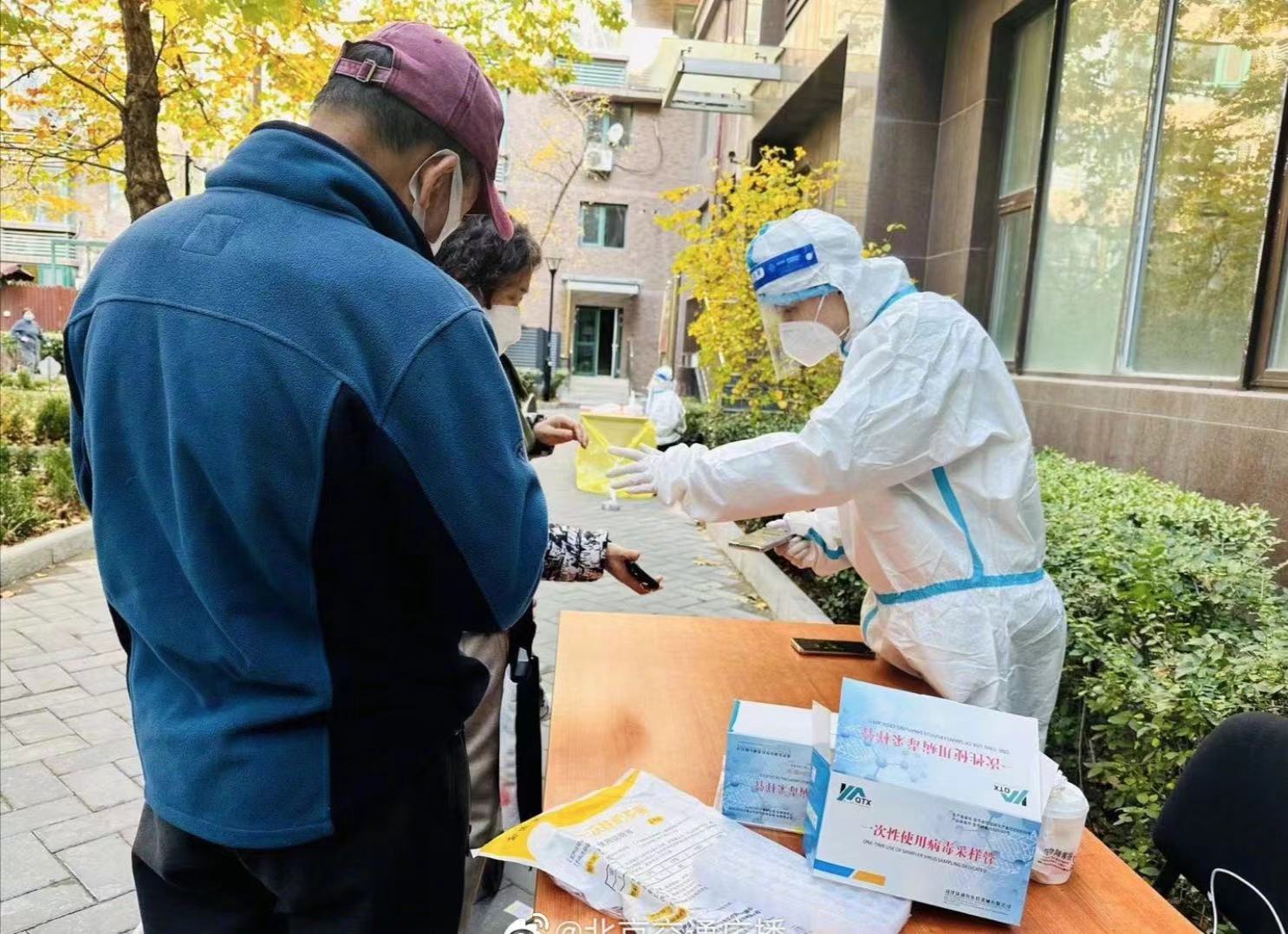
People in Beijing's Chaoyang district are getting nucleic acid tests in their neighborhood. The city’s numerous nucleic acid testing sites for large-scale testing that had been set up along the roadsides and around commercial and office areas were temporarily closed in Chaoyang district starting from Monday. Photo: ifeng
China's 20 optimized measures for combating COVID-19 are the optimization and improvement of the ninth version of the epidemic prevention and control plan, which has withstood the test of the epidemic and achieved remarkable results, head of China's top health authorities said on Wednesday.
The government remains committed to the principles of scientific and targeted prevention and control measures to deal with the epidemic in an orderly and effective manner, said He Qinghua, a first-level inspector at the National CDC, adding that the 20 optimized measures and the ninth edition COVID-19 playbook still adhere to the dynamic zero-COVID policy.
China made its latest move in scientific and precise epidemic control and prevention work to fight the COVID-19 epidemic amid a global resurgence by releasing
20 optimized measures on November 11, including shortened quarantine periods for international arrivals and cancelation of circuit breakers for inbound flights.
The newest steps made bold adjustments in some of the country's epidemic-management measures, including shortened quarantine periods for international arrivals and close contacts of confirmed cases from 7+3 (seven days of centralized quarantine and three days of health observation at home) to 5+3. The measures also required the timely screening of close contacts of confirmed cases, but no longer required the screening of close contacts, or secondary contacts.
"Data shows that cutting centralized quarantine for travelers and close contacts to five days would still catch the vast majority of COVID-19 infections, with an accuracy rate of 94.5 percent," Wang Liping, a research fellow at the Chinese Center for Disease Control and Prevention (CDC), told media.
As the incubation period of the virus is short, the time of centralized quarantine is shortened accordingly, Wang said, adding that the remaining risk of virus transmission is further prevented through a 3-day at home quarantine, using nearly 30 percent less resources than centralized quarantine.
In addition, the delineation of some medium-risk areas is inaccurate and the scope is too large. The probability of confirmed cases in such a delineated area is extremely low, and the control of such a large area and personnel costs great resources, the research fellow noted.
The overhaul of the previous epidemic prevention and control plan is a refinement of the measures and not a relaxation of controls. Instead, it is aimed to put forward higher requirements for epidemic prevention and control, which makes it more scientific and accurate, Wang said.
Global Times




